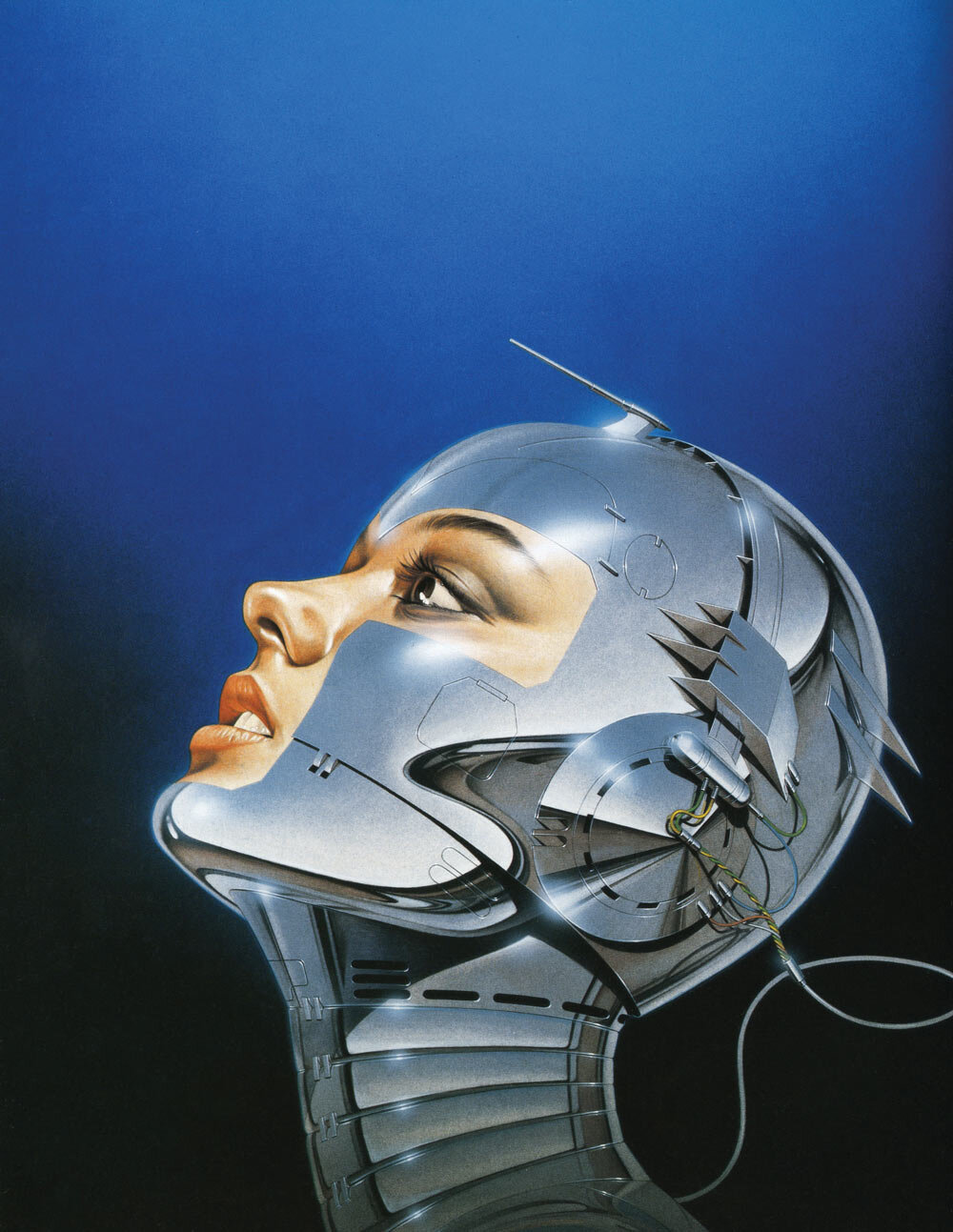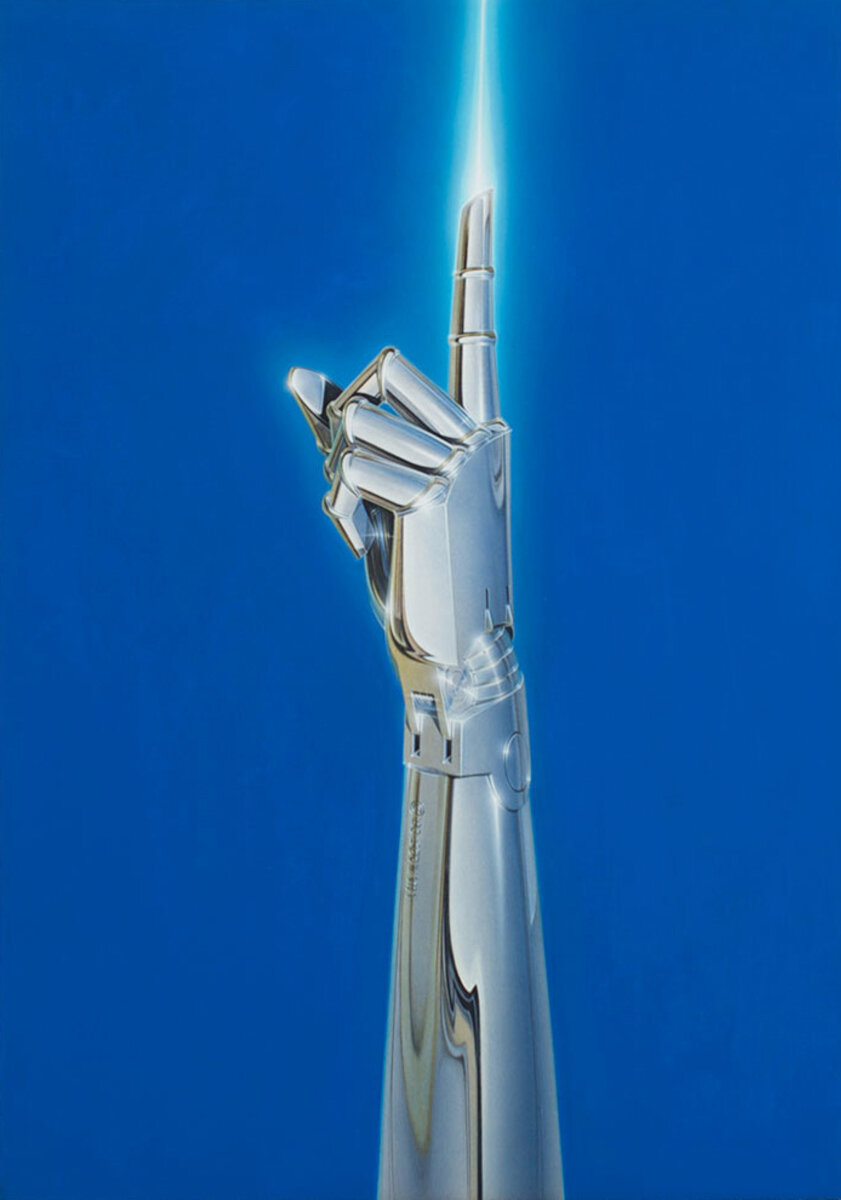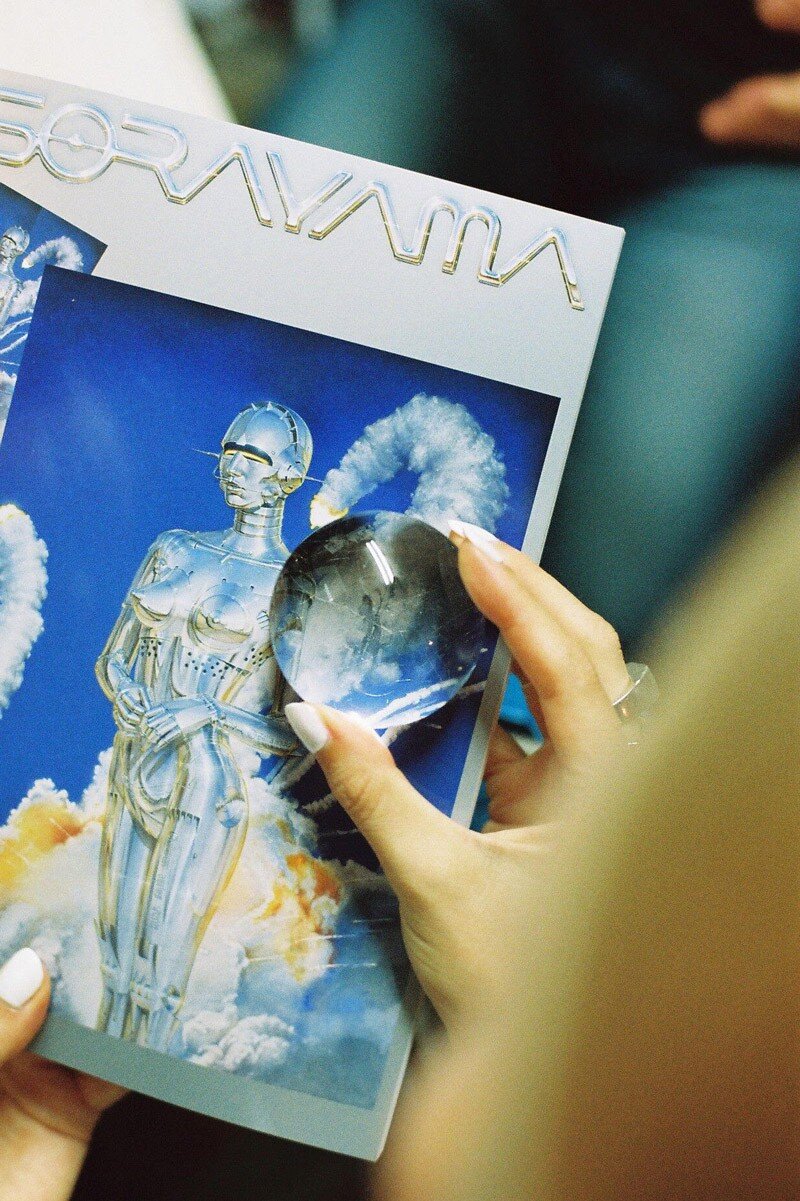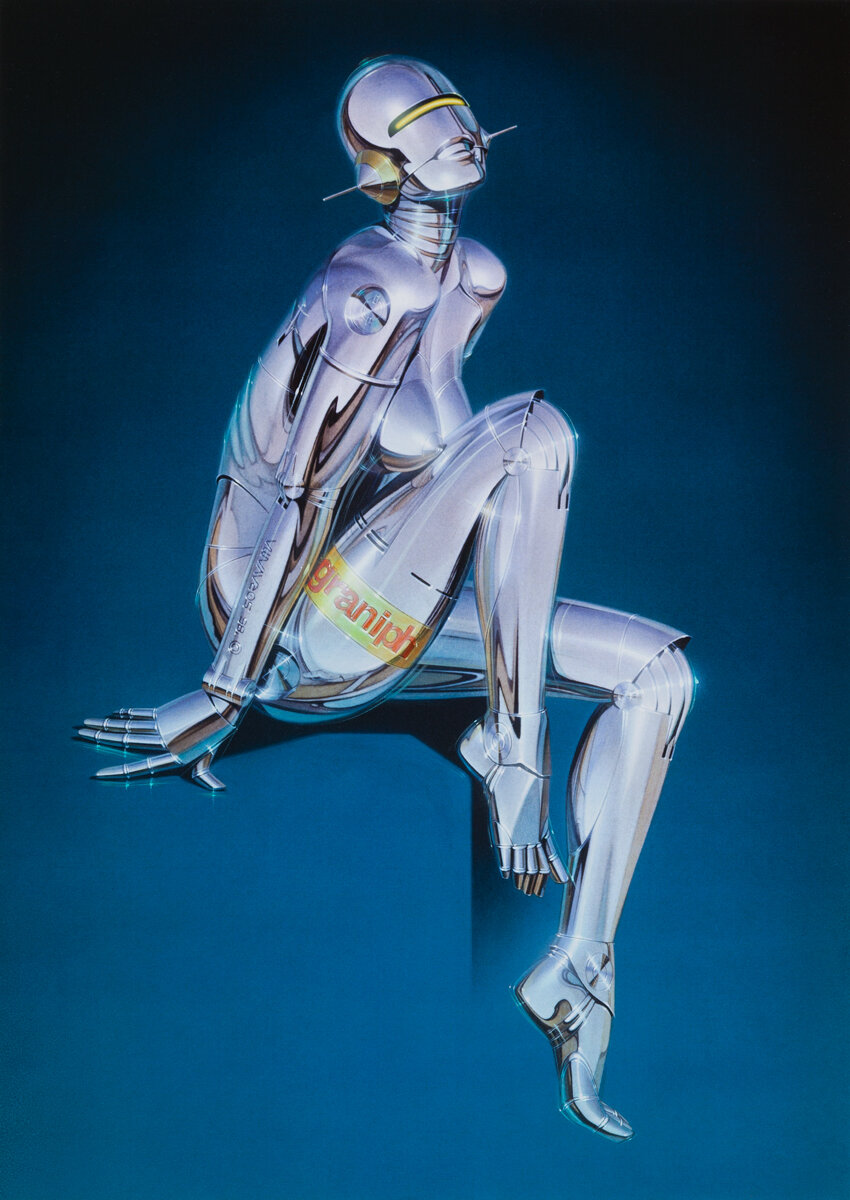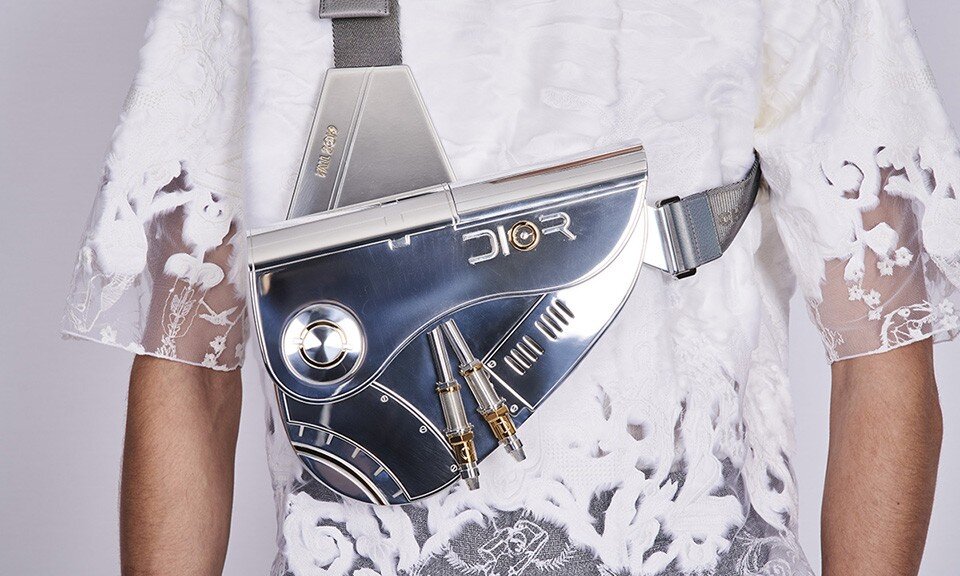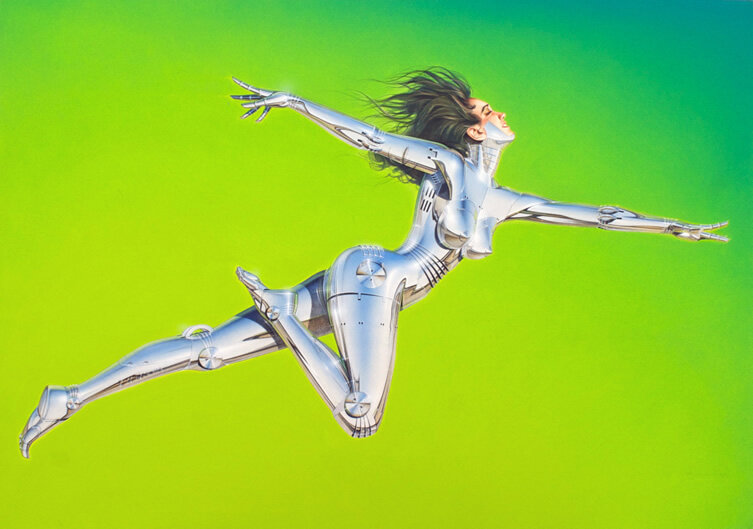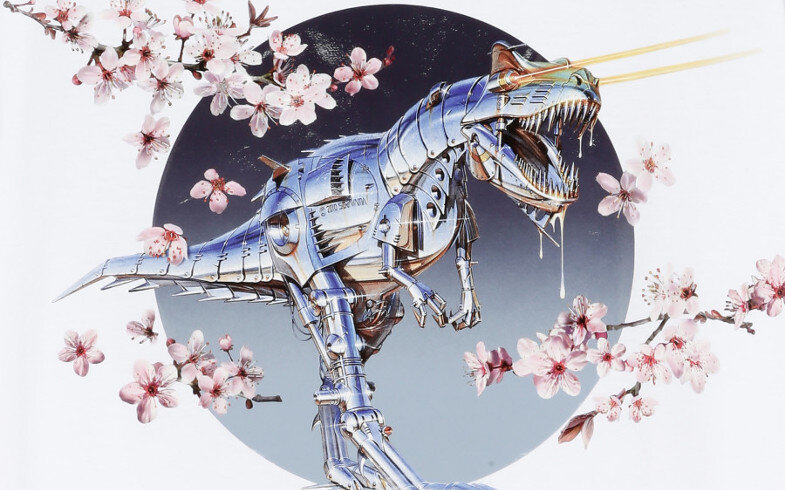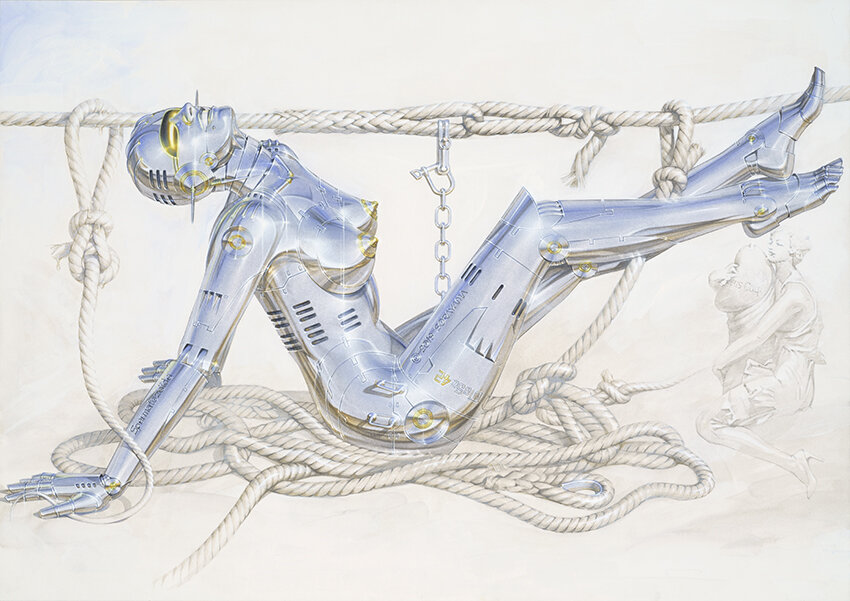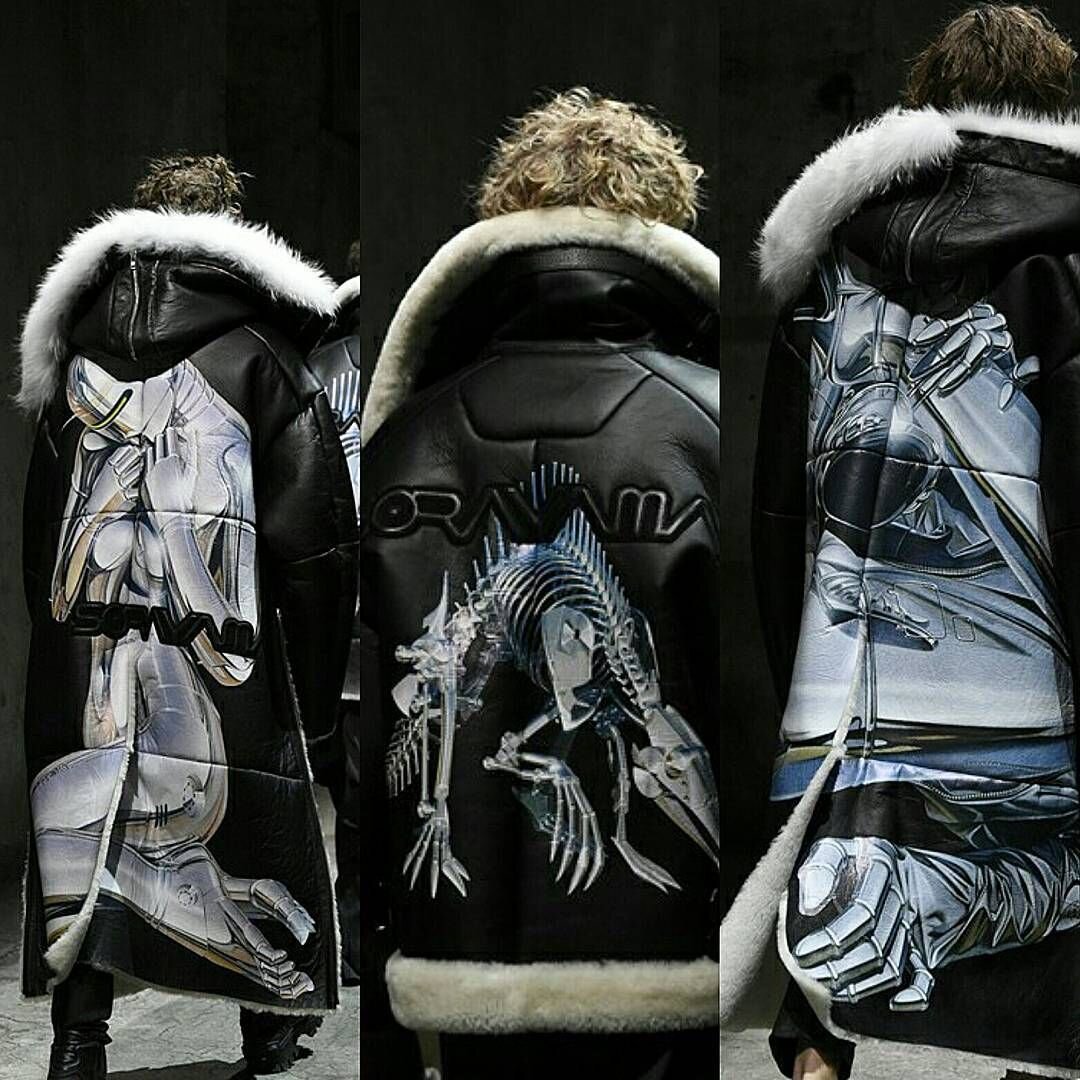Do androids dream of electric girls? - Hajime Sorayama
By Hannah Schmidt-Rees
Hey! Just a heads up, Hajime Sorayama’s work does feature nudity, just so you’re aware!
The first time I heard of Hajime Sorayama was his collaboration with Kim Jones, for the Pre-Fall 2019 collection for Dior Homme. Sorayama’s work was featured in the staging of the show, as well as printed on various pieces. A 39 foot-tall sculpture was the centre of the laser-light show, with Sorayama’s work, ranging from the past 40 years of his career being featured on various Dior Homme pieces. (The sculpture weighed just under a tonne, and took 16 people to assemble by the way.)
The Pre-Fall 2019 collection is one of my favourite collections by Kim Jones, combining cyberpunk details, futuristic femininity and Japanese flora to create an imagined future. It’s all of my favourite aesthetics put into one. The collection in itself was a homage to Christian Dior’s love of Japanese culture, noted by this show being the first Dior Menswear collection in Tokyo. From this collection, I have grown to become a fan of Sorayama’s work; I love his combination of Playboy-style femininity and cyberpunk humanity.
“All my featured artworks for the show portrayed robots,... Some had feminine figures, others were in the shapes of animals or dinosaurs. There were works from every part of my career, ranging from some that were made 40 years ago.”
It’s a perfect collaboration, as Sorayama’s presentation of futuristic femininity contrasts yet combines with Christian Dior’s traditional view of femininity
Growing up in South Japan, Hajime Sorayama spent his adolescence in high school sketching Playboy models, depicting an unattainable version of womanhood and feminine beauty After his graduation from Tokyo’s Chuo Art School in 1968, Sorayama received a unique commission from an advertising agency, which essentially was to create a character that was similar to C-3P0 but not too close to breach copyright law. From this point, Sorayama’s work snowballed into the creation of as he calls it; “sexy robots”.
His first collection in 1983, aptly named Sexy Robot was revered for its unique concept, as well as for its controversy. In addition, Sorayama is known as one of the founders of the airbrush technique, which he uses to create the smooth and metallic reflections in his works.
“In pursuit of hyper-realism, I use the airbrush in a way that naturally depicts minute details of human skin, lips, eyeballs, hair, even individual body hair, or the feel of leather or silk clothes, the metallicity of the robot, the reflection of light.”
In 1999, Sorayama achieved Japan’s highest design award at the time, the Grand Prize of Best Design, for his concept design of Sony’s AIBO (more on that later). Sorayama’s work explores the ‘limitations of desire’, which he explores through erotic and hyperreal fembot sculptures and paintings. He combines pop culture references with 1950 playboy covers, sci-fi and visions or AI and robotics. It’s sort of like the exploration of sex in the digital age.
The idea of sex and eroticism is so closely tied to skin and the human body, so it’s incredibly interesting when that idea is subverted with cold metallic shells. Sorayama explored the taboo in an impersonal way, intending to provoke through fetishism. His hyperrealist aesthetic further emphasises this, as he presents impenetrable metal in a soft way, combing two contrasting aspects. In addition, he also creates an ideal of female and sexual liberation in the digital age, presenting these fembots like goddesses of mystical beings.
Kim Jones isn’t the only fashion designer Sorayama has collaborated with. He worked with Thierry Mugler for the AW95 show, to bring his works to life in the form of metallic/transparent and feminine cyborg armour. Similar to both the work of Sorayama and Mugler, it combines maximalist persona and hyper femininity. He has also worked with Korean designer Juun.J to create a set of one-of-a-kind sterling coats, as well as brands like Forever 21 and Uniqlo.
He also helped to design the first prototypes of Sony’s AIBO (you know that AI robot dog?) in 1999, in which prototypes are permanently held at the MoMA and the Smithsonian. The creation of AIBO took the anxieties of the time (AI and robotic/technology) and transformed it into something cute and cuddly, without the stress of actually owning a dog. It also barked when you received an email, which is iconic.
Regardless of how many brands Sorayama has worked with, he still maintains his cult-like status, even after a career almost spanning half a century. As an artist, Hajime Sorayama likes to keep low and focus on his work, so there isn’t much about him on the interest, apart from his work. Hajime combines two of my favourite concepts; cyberpunk/sci-fi with pin-up femininity. His work is truly amazing to me and I would love to own a piece of his work, preferably from one of his fashion collaborations. That would be truly amazing.
I’ve put a variety of his work below, please give it a look!


